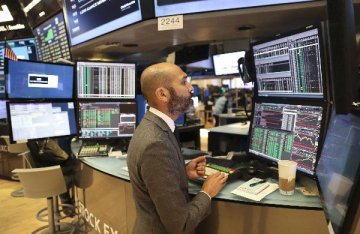
U.S. Federal Reserve officials were divided over when to start shrinking its balance sheet, which ballooned to around 4.5 trillion U.S. dollars, according to minutes of the Fed's June 13-14 policy meeting released on Wednesday.
"Several preferred to announce a start to the process within a couple of months; in support of this approach, it was noted that the Committee's communications had helped prepare the public for such a step," the minutes said.
The Fed last month announced a plan to trim its holdings of U.S. Treasury bonds and other mortgage-backed securities later this year. Fed Chair Janet Yellen said at a press conference that the process could start "relatively soon" if the U.S. economy evolves in line with their expectations.
However, other Fed officials emphasized that "deferring the decision until later in the year would permit additional time to assess the outlook for economic activity and inflation", according to the minutes.
"A near-term change to reinvestment policy could be misinterpreted as signifying that the Committee had shifted toward a less gradual approach to overall policy normalization," they argued.
Most analysts and market participants believed that the Fed was likely to start shrinking its balance sheet in September, with a further rate increase in December. The Fed's next policy meeting was scheduled for July 25-26.
The minutes also showed that Fed officials generally supported continuing a gradual approach to raising interest rates, but they were divided as to the pace of further rate hikes.
"A few participants who supported an increase in the target range at the present meeting indicated that they were less comfortable with the degree of additional policy tightening through the end of 2018 implied by the June SEP median federal funds rate projections," the minutes said, adding they expressed concern that such a path of rate hikes "might prove inconsistent with a sustained return of inflation to 2 percent."
Soft inflation remains a puzzle for the Fed. While the unemployment rate fell to 4.3 percent in May, a 16-year low, the inflation was consistently below the central bank's target of 2 percent. The core price index for personal consumption expenditures, an inflation indicator favored by the Fed, slowed to 1.4 percent in May from 1.5 percent in April, according to the Commerce Department.





















Latest comments